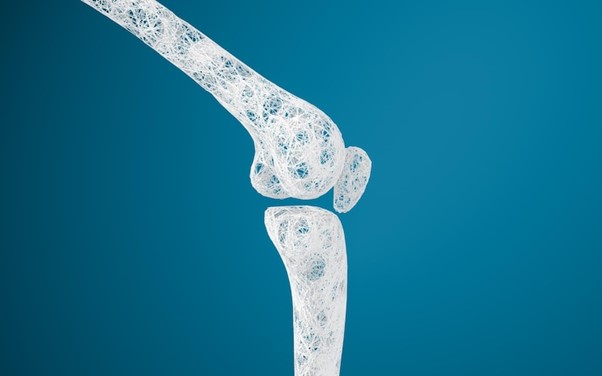Learn how to identify osteomalacia effectively. This guide breaks down common signs and symptoms, explores key causes, and helps uncover the best solutions and preventive measures to tackle this bone-health issue.
Understanding Osteomalacia
What is osteomalacia? It’s a condition causing softening of the bones. The main culprit is often a lack of vitamin D, which is needed for bone strength. Without this vitamin, bones become soft and can ache or lead to fractures more easily.
Osteomalacia disrupts bone health and poses a bigger threat than many realize. It especially affects adults, while in children, a similar condition is called rickets. Symptoms of osteomalacia can sneak up on people, often being confused with other common bone issues.
In India, cultural habits like spending most time indoors or wearing clothing that covers much of the skin can result in less sun exposure. This reduces the body’s natural production of vitamin D, increasing the risk of developing osteomalacia.
People often mistake osteomalacia for other bone problems like osteoporosis. While both diseases affect bones, they are different. Osteoporosis leads to brittle bones due to a loss of bone density, whereas osteomalacia results in softened bones. These distinctions are crucial because the misdiagnosis of osteomalacia can delay proper treatment.
Recognizing this condition early on is vital. Early osteomalacia diagnosis can prevent long-term damage and health complications. It allows individuals to adopt prevention methods, integrate dietary recommendations, and embark on effective treatment strategies.
Common Causes and Symptoms
Delving into the causes of osteomalacia, its roots often lie in nutritional deficiencies, particularly in vitamin D. When people don’t eat enough foods rich in this nutrient, they fall significantly short. It’s common in India, where diets might lack diversity. Besides, limited sun exposure and certain medical conditions can also exacerbate these deficiencies.
What does living with osteomalacia feel like? The symptoms of osteomalacia cover both physical and emotional aspects:
- Persistent bone pain often starts in lower back and hips.
- Muscle weakness and fatigue, making routine activities hard.
- A general feeling of sadness or depression due to chronic discomfort.
If any of these symptoms sound familiar, consulting a healthcare professional is wise. They can conduct tests that check vitamin levels or use imaging to assess bone health.
Recent research in India emphasizes early testing and intervention. Thanks to these insights, doctors better understand how this condition manifests uniquely among Indian populations. Awareness and preventive care based on recent studies can significantly reduce this disease’s effects.
Effective Treatment and Prevention Strategies
Managing osteomalacia involves several approaches. In India, osteomalacia treatment options like vitamin D supplements play a key role. Patients should consume these as recommended by doctors.
Sunlight therapy is another effective treatment. Encouraging people to safely increase sun exposure helps boost natural vitamin D levels. Regularly spending time outdoors, especially in the morning, can aid healing.
Considering nutritional therapy, here are some osteomalacia dietary recommendations:
- Foods like fish, egg yolks, and fortified grains provide vitamin D.
- Incorporating more calcium-rich foods like milk and cheese supports bone health.
- Phosphorus from lean meats and nuts also plays a crucial part.
Regular exercise is equally vital. Activities that strengthen bones, like walking or yoga, can prevent further complications. With a few lifestyle adjustments, managing osteomalacia naturally becomes more achievable.
In India, healthcare systems are prepared to offer support. By focusing on prevention, these programs work to reduce new cases and educate communities about osteomalacia.
Long-term Management and Conclusion
Lifelong management strategies are essential. Regular check-ups and monitoring vitamin levels help prevent recurring symptoms, improving quality of life.
If you suspect any signs of this condition, don’t wait. Consulting a doctor and discussing concerns lets you initiate necessary osteomalacia prevention methods.
For more guidance, plenty of resources and support groups in India offer aid and enhance understanding of this bone disorder.
Finally, awareness plays a significant role. Educating oneself and being proactive are the best defenses against osteomalacia. Recognize the signs, understand the causes, and take steps to maintain healthy bones.
Osteomalacia is a condition that results in weakened bones, often caused by a deficiency in vitamin D, calcium, or phosphate. It can lead to symptoms such as bone pain, muscle weakness, and difficulty walking. Early identification of osteomalacia is crucial to prevent further bone damage and improve quality of life. If you’re experiencing any of these symptoms, it’s important to consult a healthcare professional for proper diagnosis and treatment.
At ELV Healthcare, our expert specialists provide comprehensive care for osteomalacia, offering personalized treatment plans that include supplements, dietary adjustments, and lifestyle changes.
Consult ELV Healthcare today to receive a thorough evaluation and the right solutions for your bone health.



